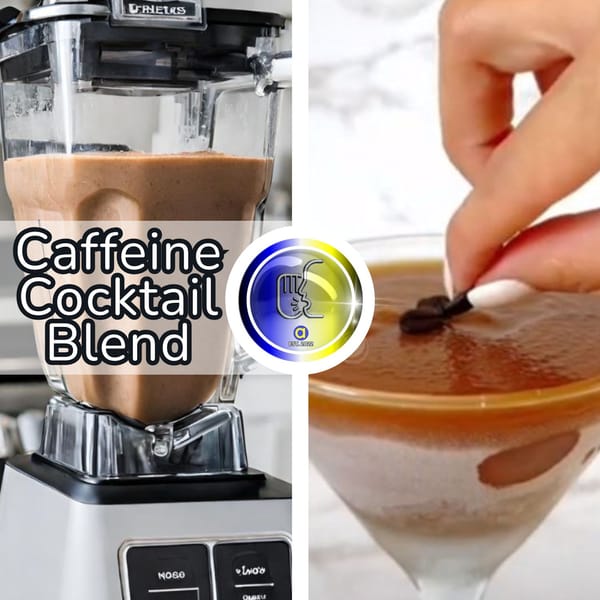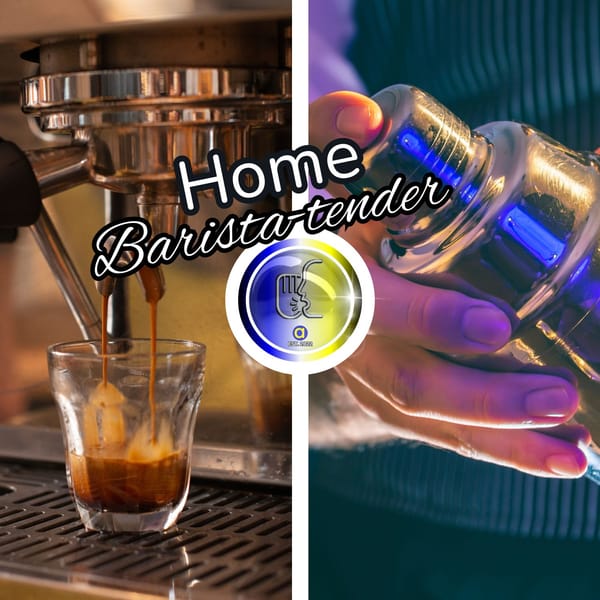The Quest for the Perfect Espresso
For coffee lovers embarking on their coffee journey, the quest for the perfect espresso can be both exhilarating and daunting. The heart of this quest often lies in the choice of equipment, particularly the espresso machine.
With a market saturated with options ranging from a few hundred dollars to the price of a small car, the question arises: does an expensive espresso machine make a difference?
The Price Spectrum of Espresso Machines
The coffee industry offers a wide array of espresso machines, from the humble stovetop espresso maker to the sophisticated commercial espresso machines.
Cheap espresso machines might seem like a bargain, but can they deliver the same quality as their more expensive counterparts? On the other hand, high-end espresso machines boast a plethora of features, but is the extra cost justified?
Understanding Espresso and Its Demands
Making espresso is an art form that requires precision. The brewing process involves forcing hot water through finely ground coffee beans at high pressure.
This method extracts the rich flavors and oils that constitute a great espresso. The quality of this extraction depends significantly on the machine's ability to maintain consistent temperature and pressure throughout the brewing process.
The Role of Temperature Stability
Temperature stability is crucial for extracting the best coffee flavors. Expensive machines often have superior technology to ensure that the water is at the perfect temperature throughout the brewing process.
Cheaper machines may struggle with maintaining the right temperature, leading to a subpar espresso that could be either burnt or under-extracted.
Pressure Control and Coffee Grounds
The pressure applied to coffee grounds during extraction is another critical factor. Most machines operate at around 9 bars of pressure, the standard for a good espresso machine.
However, more expensive espresso machines often provide more precise control over this pressure, which can make a significant difference in the quality of the espresso shot.
The Impact of High-Quality Materials
High-quality materials like high-quality stainless steel not only contribute to the durability of the machine but also to the taste of the espresso. Expensive machines tend to use materials that do not react with water or alter the taste of the coffee, ensuring that each cup is as good as the last.
The Economics of Espresso Machines: Cost vs. Quality
When considering the purchase of an espresso machine, the economics of the decision can be as complex as the brewing process itself. Cheap espresso machines often attract first-time buyers looking to save money, but the initial savings may not translate to long-term value.
These cheaper machines typically use less durable materials and simpler technology, which can affect both the longevity of the machine and the quality of the coffee it produces. On the other hand, high-end espresso machines are built with high-quality materials like high-quality stainless steel and often include built-in grinders and advanced features that contribute to a superior espresso.
The investment in an expensive espresso machine is often justified by the intricate engineering that goes into automatic espresso machines. These devices are designed to maintain precise temperature and pressure levels, which are crucial for extracting the best espresso.
While a cheaper machine may be able to produce a decent cup, aficionados argue that the massive difference in taste and consistency is noticeable when using a quality espresso machine. Moreover, the durability and efficiency of expensive machines can mean fewer repairs and replacements over time, potentially making them more cost-effective for those who love coffee and indulge in it frequently.
The Economics of Scale in Espresso Machine Manufacturing
The production of espresso machines, particularly those that fall into the category of high end espresso machines, often involves complex manufacturing processes and the use of high quality materials. Expensive machines typically boast components made of high quality stainless steel and other durable materials that are less likely to be found in a cheap espresso machine.
This is because manufacturers of premium models are not as constrained by the economics of scale that dictate the production of cheap machines. They can afford to invest more money into the craftsmanship and materials, which in turn contributes to the overall quality and longevity of the machine.
On the other hand, manufacturers producing coffee machines for the mass market must focus on keeping costs low to appeal to a broader audience. This often means that the materials used are less expensive, and the machines might not have the same level of precision or features as their more costly counterparts.
While a cheap espresso machine can still make good coffee, the difference in the quality of the components can affect the machine's durability and the coffee's taste over time. The economics of scale thus play a pivotal role in determining the price and quality of espresso makers available to consumers.
The Influence of Built-In Grinders on Espresso Quality The presence of built-in grinders in espresso machines is a feature often associated with higher-end models. The convenience and precision offered by these integrated systems can significantly influence the quality of the espresso shot.
A cheap machine may require an external grinder, which not only adds to the overall cost but also to the counter space required. In contrast, expensive machine options with built-in grinders ensure a seamless bean-to-cup experience, with the added benefit of grinding the coffee immediately before brewing, preserving the coffee's freshness and flavor profile.
Moreover, the grind consistency is paramount in achieving the perfect espresso. Semi-automatic machines with high-quality, built-in grinders provide a level of control over the grind size that cheap machines with less sophisticated grinders cannot match.
This control allows for a more precise extraction, which is critical for coffee tastes that are complex and nuanced. The integration of a superior grinder in an expensive machine is a testament to the manufacturer's commitment to brewing excellence, offering a clear advantage to the discerning espresso enthusiast.
Semi-Automatic Machines: Balancing Cost and Control Semi-automatic machines strike a balance between manual and fully automatic espresso machines, offering a degree of control that appeals to coffee aficionados who enjoy the hands-on approach to their espresso making.
While a cheap machine may offer basic functionality, investing in an expensive machine in the semi-automatic category often yields a more robust build, better heat management, and finer control over the brewing process. These features contribute to a more consistent espresso shot and a richer coffee experience.
The cost of semi-automatic machines can be justified by the level of personalization they allow. Users can adjust variables such as water temperature, pressure, and extraction time to suit their individual coffee tastes. This customization is less likely to be found in lower-end models.
For those who view espresso making as a craft, the investment in a semi-automatic machine with advanced features, such as precise temperature controls and built-in grinders, is a worthwhile consideration that can elevate the daily coffee ritual into an art form.
Customization and Personalization in Espresso Machines
When it comes to espresso machines so expensive, one of the features that justify their price tag is the level of customization and personalization they offer. High-end models often come with a variety of programmable settings that allow users to tweak every aspect of their espresso shot, from temperature to shot volume.
This level of control is a significant step up from the basic functionality offered by a first espresso machine or a standard coffee maker. For coffee aficionados, the ability to fine-tune their brew is a crucial aspect of the espresso experience, and it's something that cheaper models typically cannot match.
Moreover, semi-automatic machines and those with built-in grinders provide an additional layer of convenience and precision. The integration of a grinder in the machine makes the process of brewing espresso much more streamlined, ensuring that the coffee grounds are as fresh as possible for each shot.
This is a feature seldom found in less expensive machines, which may require a separate grinder purchase. The convenience and customization offered by expensive espresso machines worth the investment for those who are serious about their home espresso machine experience and are willing to spend more money for these advanced features.
Brewing Excellence: The Case for Expensive Espresso Machines
The pursuit of brewing excellence is a journey that many coffee lovers are willing to invest in. Expensive espresso machines are often lauded for their ability to consistently produce the best espresso, a result of their superior construction and technology.
eatures like a reliable steam wand, precise pressure control, and a stable drip tray contribute to the overall experience and result in a cup of coffee that stands out from those made with basic coffee makers or other machines like the French press or moka pot. The difference is not just in the taste but also in the texture and temperature of the coffee.
Moreover, the versatility of high-end espresso machines extends beyond just espresso shots. Many come with programmable settings that allow for a variety of brewing methods, catering to individual preferences and expanding the repertoire of home espresso machines.
This flexibility, combined with the convenience of features like automatic cleaning cycles and semi-automatic machines, positions expensive espresso machines as a worthwhile investment for those who value both quality and convenience in their daily coffee ritual.
The ability to craft café-quality beverages at home can ultimately save money that would otherwise be spent at coffee shops, making the expensive machines worth the upfront cost for serious coffee enthusiasts.
Grinder Integration: A Worthwhile Investment?
Many expensive espresso machines come with built-in grinders. This integration can be a worthwhile investment as it ensures the coffee is ground fresh for each shot, which is essential for a good espresso. The consistency of the espresso grind is also better maintained with higher quality grinders.
The Convenience of Programmable Settings
Programmable settings and digital displays are features often found in more expensive espresso machines. These allow for greater control over the brewing process and can enable even novice baristas to achieve a consistent shot of espresso.
The Longevity of Expensive Espresso Machines
Durability is a key factor when considering the purchase of an espresso machine. Expensive machines are often built to last, with the ability to repair or replace parts as needed. This contrasts with cheaper machines, which may become unusable if a single component fails.
The Versatility of Steam Wands
Steam wands are a common feature on most espresso machines, but the quality and functionality can vary greatly. High-end machines typically offer steam wands that provide better steam pressure and temperature control, essential for creating the perfect froth for lattes and cappuccinos.
The Debate: Is More Expensive Always Better?
While it's clear that expensive espresso machines offer numerous benefits, the debate remains whether they always equate to a better cup of coffee. Some argue that with the right barista skills, cheaper machines can produce espresso shots of comparable quality.
The Real Difference: User Experience
Beyond the technical aspects, the user experience can be vastly different between cheap and expensive espresso machines. The ease of use, speed, and reliability of more expensive machines can make the coffee-making process more enjoyable and less frustrating.
The Verdict on Expensive Espresso Machines
In the end, whether an expensive espresso machine is worth the investment depends on the individual's priorities. For those who value the nuances of a quality espresso and the art of coffee making, the additional features and performance of high-end machines may be a justifiable expense.
Summary
Expensive espresso machines offer a range of benefits that can make a difference in the quality of espresso produced. From temperature stability and pressure control to high-quality materials and additional features, these machines are designed to provide a superior coffee experience. While they may represent a significant investment, for many coffee enthusiasts, the difference in the cup and the overall experience is worth the extra cost.

FAQ Section
Q: Can cheap espresso machines produce good espresso?
A: Yes, with proper technique and fresh, finely ground coffee beans, cheaper machines can produce a good espresso. However, they may lack the consistency and additional features of more expensive machines.
Q: Are built-in grinders in espresso machines worth it?
A: Built-in grinders can be a worthwhile investment as they ensure the coffee is freshly ground for each shot, which is crucial for the quality of the espresso. They also tend to offer better grind consistency.
Q: How long do expensive espresso machines typically last?
A: Expensive espresso machines are often built with high-quality materials and are designed to be repairable, which can extend their lifespan significantly. With proper maintenance, they can last for many years, often outliving cheaper machines.
RELATED: Best Espresso Machines Under $200







